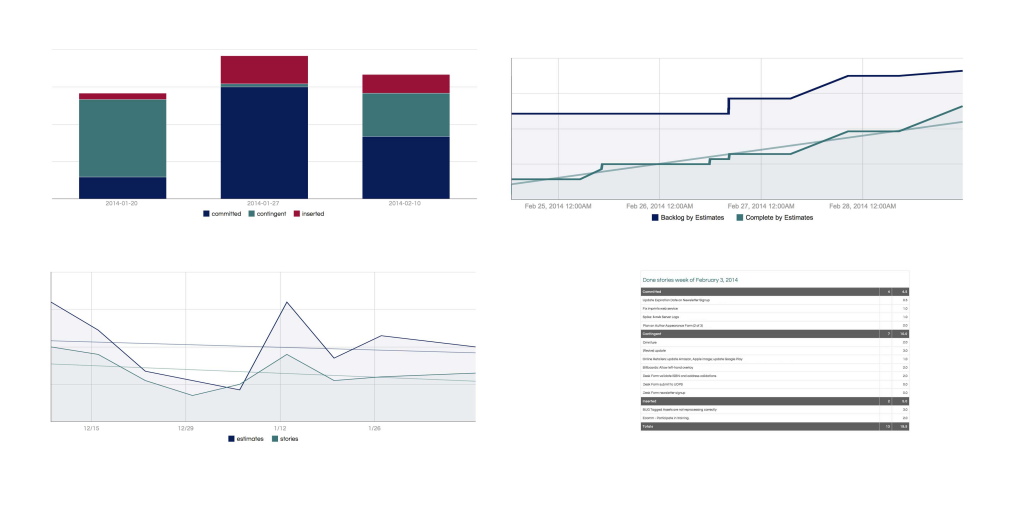 I’m working on a pet project I’m calling, for now, ProgressVisualizer. It is intended to be a quick and easy way to create visual reporting for Trello boards.
I’m working on a pet project I’m calling, for now, ProgressVisualizer. It is intended to be a quick and easy way to create visual reporting for Trello boards.
Trello is the first tracking tool my team finds so easy to use that we’ve largely stopped using our physical cork board. It offers simplicity, openness and doesn’t impose unnecessary assumptions. It offers an API that lets you interact with your data and webhooks which allow you to do so in near real time.
I’ve tried to follow Trello’s lead and make ProgressVisualizer easy to use. It is a tool intended for leads and managers who want burn ups, reports and other charts, don’t want to spend alot of time crafting reports for themselves, and believe they should impose as little overhead on their teams as possible.
ProgressVisualizer sample charts and reports

ProgressVisualizer is a nights and weekends project. I don’t know what it will become. That said, it’s more than a prototype. I respect your privacy, user profile information is encrypted, and I have provided the ability to export and destroy any data collected by the site.
Right now, I’m gathering feedback and suggestions, so if you use Trello, please try ProgressVisualizer and let me know what you think.
